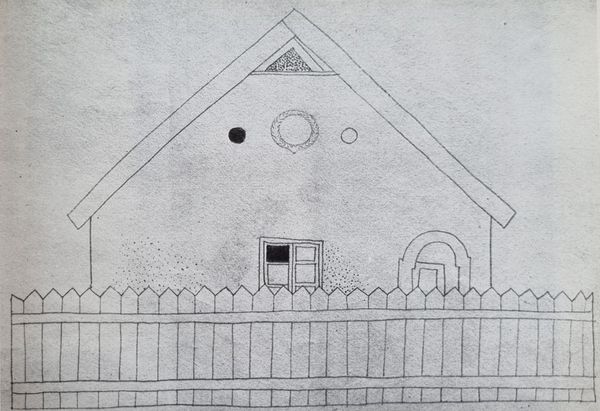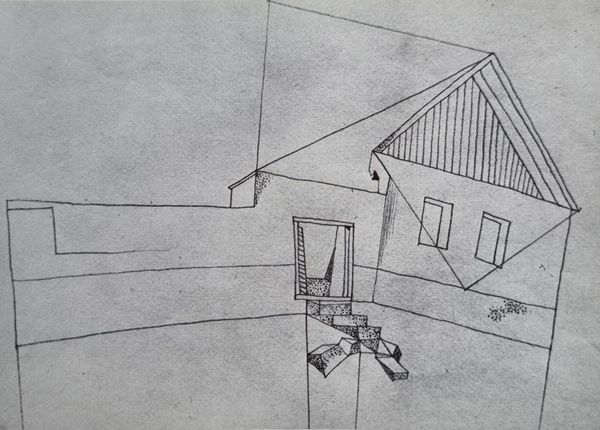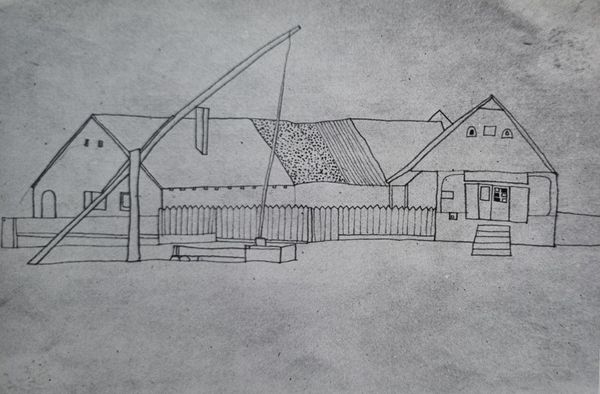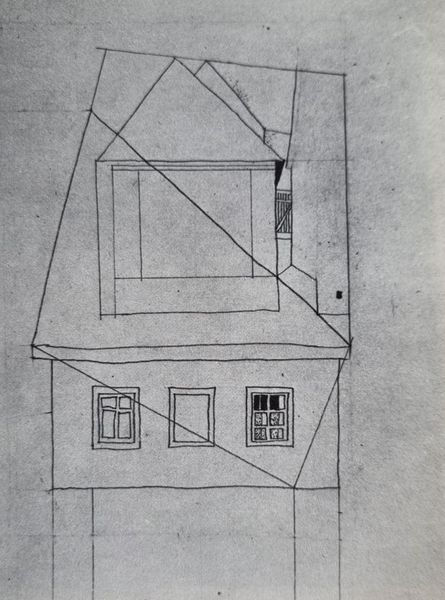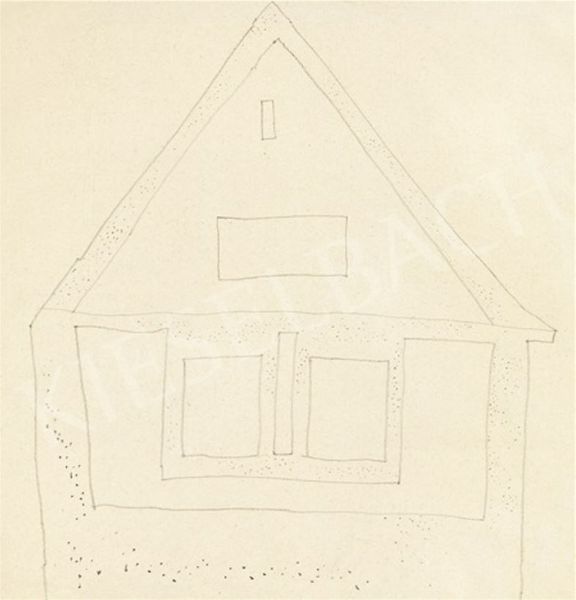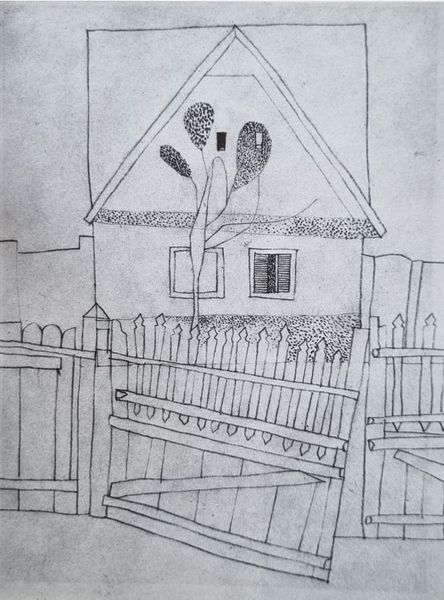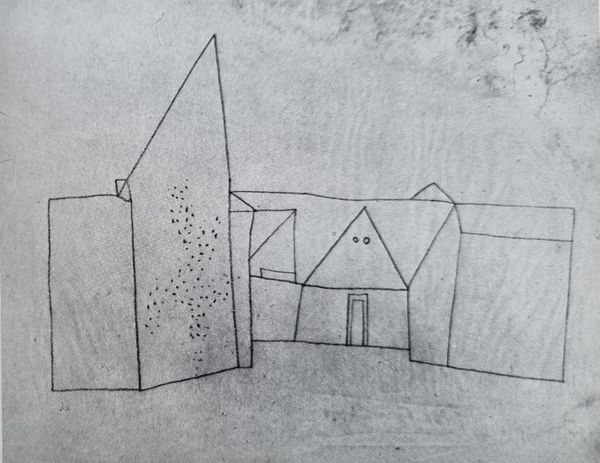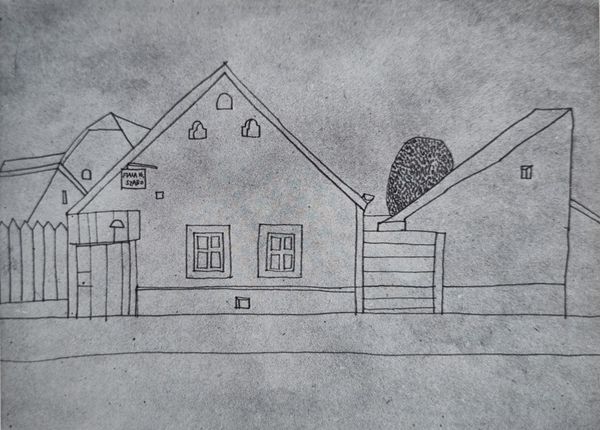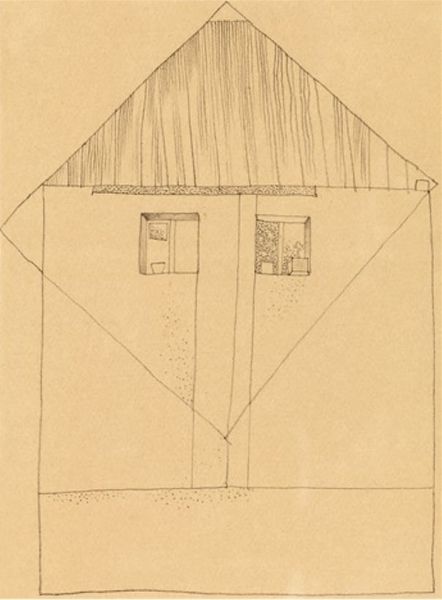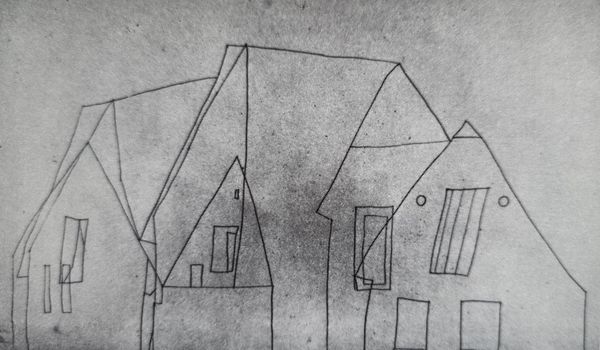
drawing, paper, pencil
#
drawing
#
amateur sketch
#
light pencil work
#
quirky sketch
#
sketched
#
sketch book
#
incomplete sketchy
#
landscape
#
paper
#
personal sketchbook
#
geometric
#
pencil
#
rough sketch
#
quick sketch
#
initial sketch
Copyright: Public domain
Editor: This is Vajda Lajos' "Szigetmonostori Ház 1868 Felirattal," a 1935 pencil drawing on paper. It feels…simple, almost like a child's drawing of a house, but there’s also a strange, compelling geometry to it. What do you see in this piece? Curator: I see a layered commentary on representation and cultural memory. Lajos, drawing this house in 1935, inscribes it with "1868." Why? It’s crucial to ask what that year might signify in terms of Hungary’s historical narrative, perhaps land ownership, or some change in law that affected families. He isn't just sketching a house; he's invoking a past, possibly a contested one, by linking it to the peasant house and perhaps broader notions of Hungarian identity tied to land and heritage. What stories could this house tell about societal shifts or power structures? Editor: That's interesting. The "1868" then becomes more than just a date; it's a symbol of historical weight. I hadn’t considered that. Curator: Exactly. The deliberate "amateur" quality – or what is read as naivete – could itself be a subversive commentary. Is Vajda aligning himself with a kind of folk tradition to critique academic art, or is he appropriating and romanticizing rural life, perhaps echoing tensions around class and artistic privilege of the time? Think about how representations of the "common person" have historically been used and abused within art and political discourse. Editor: So it's not just *what* he drew but *how* he drew it, and the baggage that style carries with it. Curator: Precisely! It’s a negotiation between personal memory, collective history, and artistic intention. It makes you question whose stories are told and how they are memorialized, right? Editor: Definitely. I’ll never look at a simple house drawing the same way again. Thanks! Curator: My pleasure. Seeing art as a site of historical and social struggle is where the real insight comes from.
Comments
No comments
Be the first to comment and join the conversation on the ultimate creative platform.
